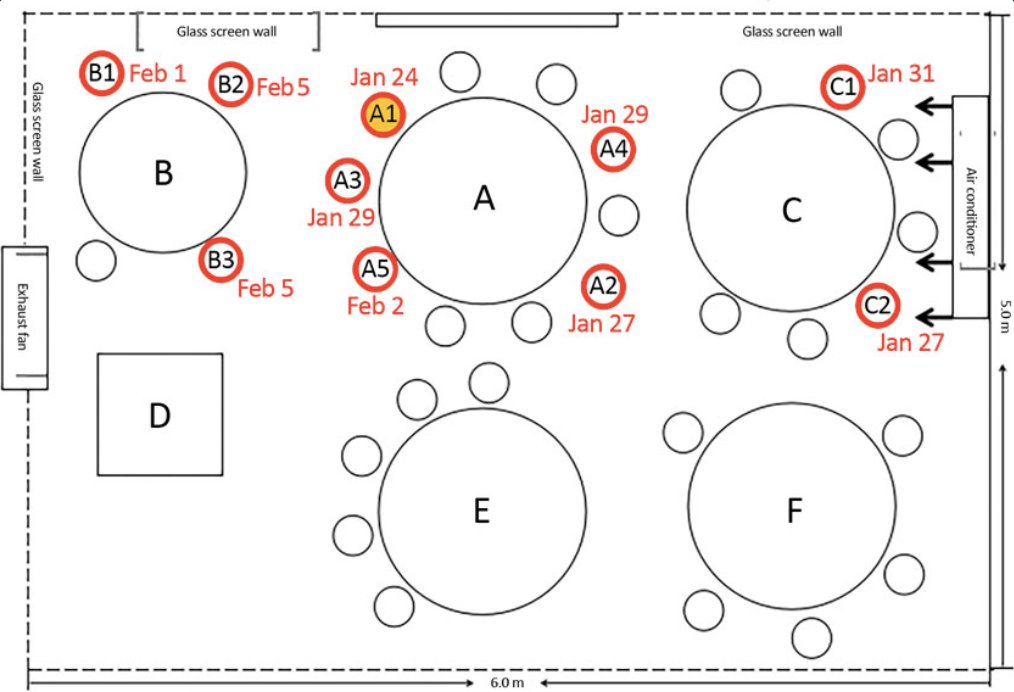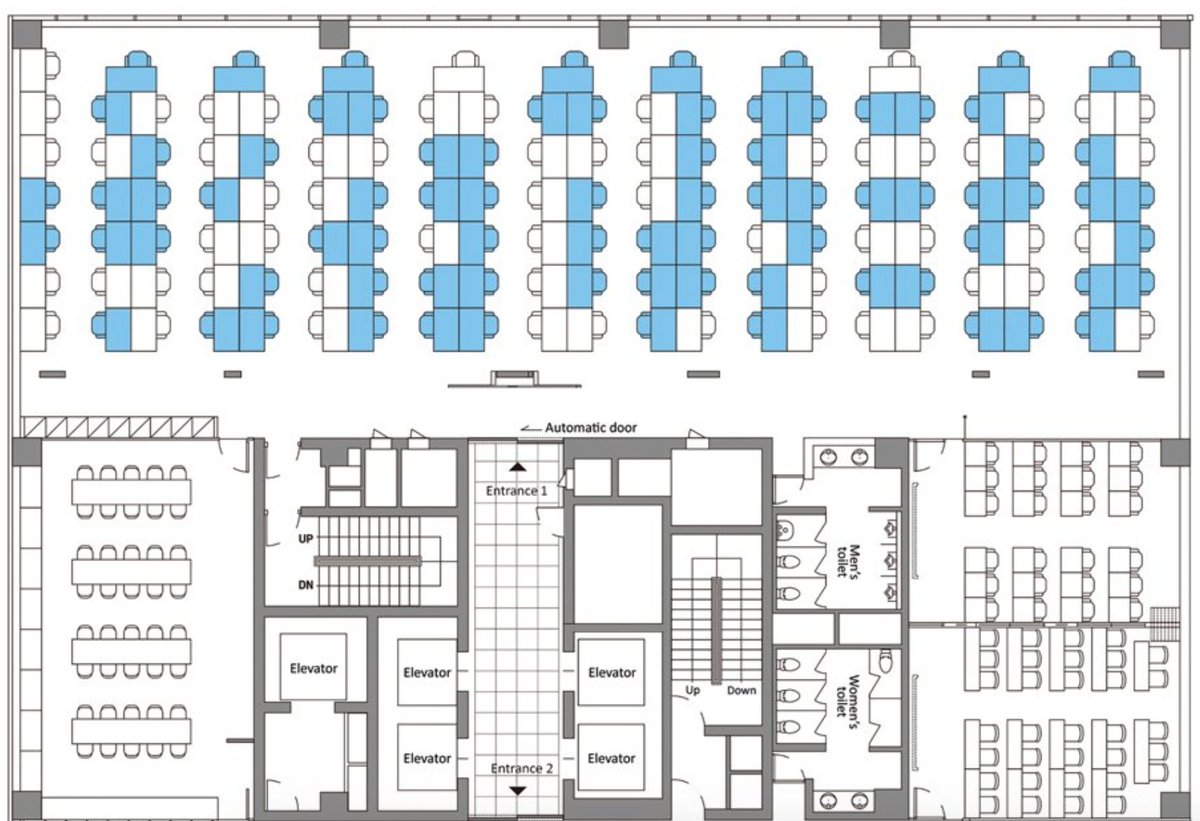- offices
- restaurants and retail
- theaters
- arenas
- bars and clubs
- gyms and fitness centers
theatlantic.com/ideas/archive/…
There is so much we don’t know about how this disease spreads and what conditions facilitate its transmission. The studies in this article aren't outliers. But the science here is far from settled.
Okay, let's go...
A Hong Kong survey reviewing 7,324 cases in China found “1 outdoor outbreak."
medrxiv.org/content/10.110…
A Japanese study estimated odds of indoor transmission to be “18.7X greater" than open-air environments
medrxiv.org/content/10.110…

Here is the famous Guangzhou restaurant study:
wwwnc.cdc.gov/eid/article/26…
Finding: 9 ppl sitting in AC airflow path get sick from droplet transmission
What it means: Increase table distancing, increase ventilation, maybe move diners outside

cdc.gov/mmwr/volumes/6…
Finding: call center outbreak in tall building with shared elevators is OVERWHELMINGLY concentrated in an 11th floor phone bank
What it means: Shared air is riskier than shared surfaces

cdc.gov/mmwr/volumes/6…
Finding: Long choir practice w/ 61 ppl leads to 53 probable cases—attack rate of 87%(!)
Implication: It’s not just the space—it’s the spit. Risk is augmented by “super-emitters,” including loud talkers and singers

Here are two alternate futures for offices, restaurants, and theaters.
theatlantic.com/ideas/archive/…
- Door 1: Social distanced seating, staggered admissions, at at-seat concessions (less crowding) preserves some shows, but ticket $$ rise and production $$ falls.
- Door 2: Singing is deemed an intolerable risk. Musicals are canceled.
This is going to be a marathon. Be S.A.F.E.
theatlantic.com/ideas/archive/…














